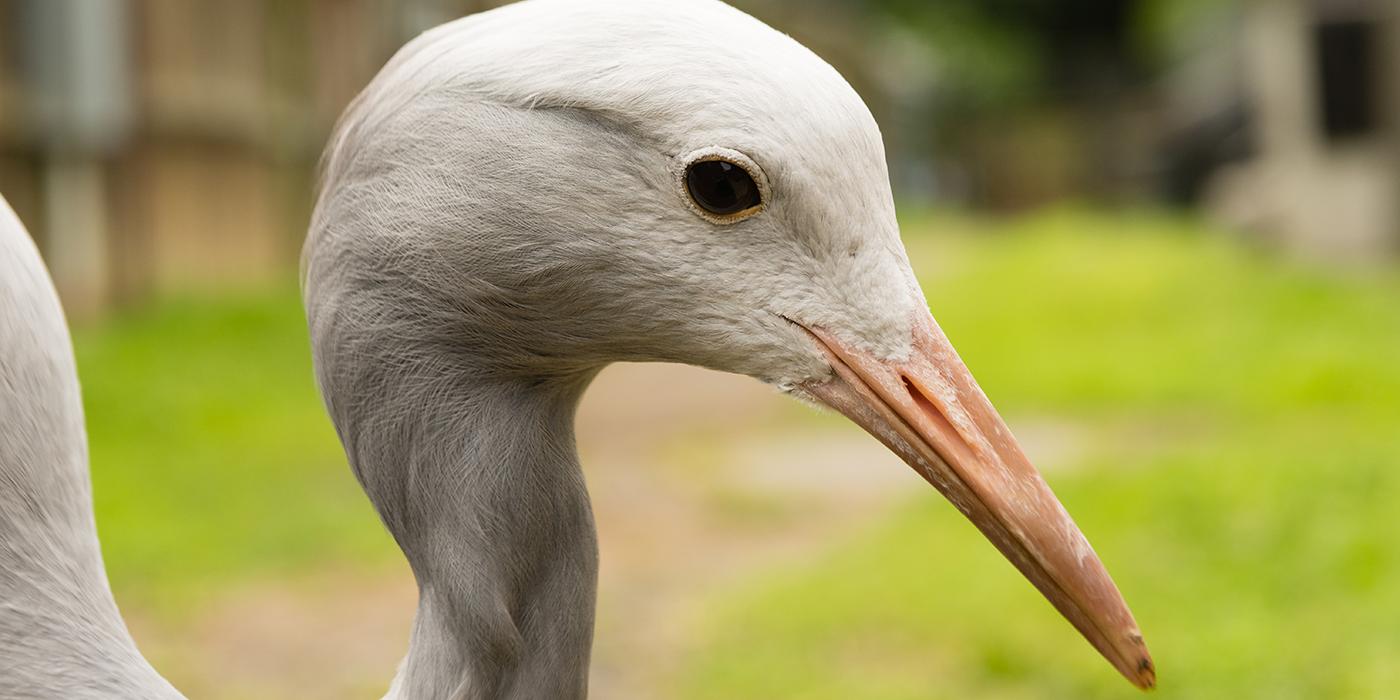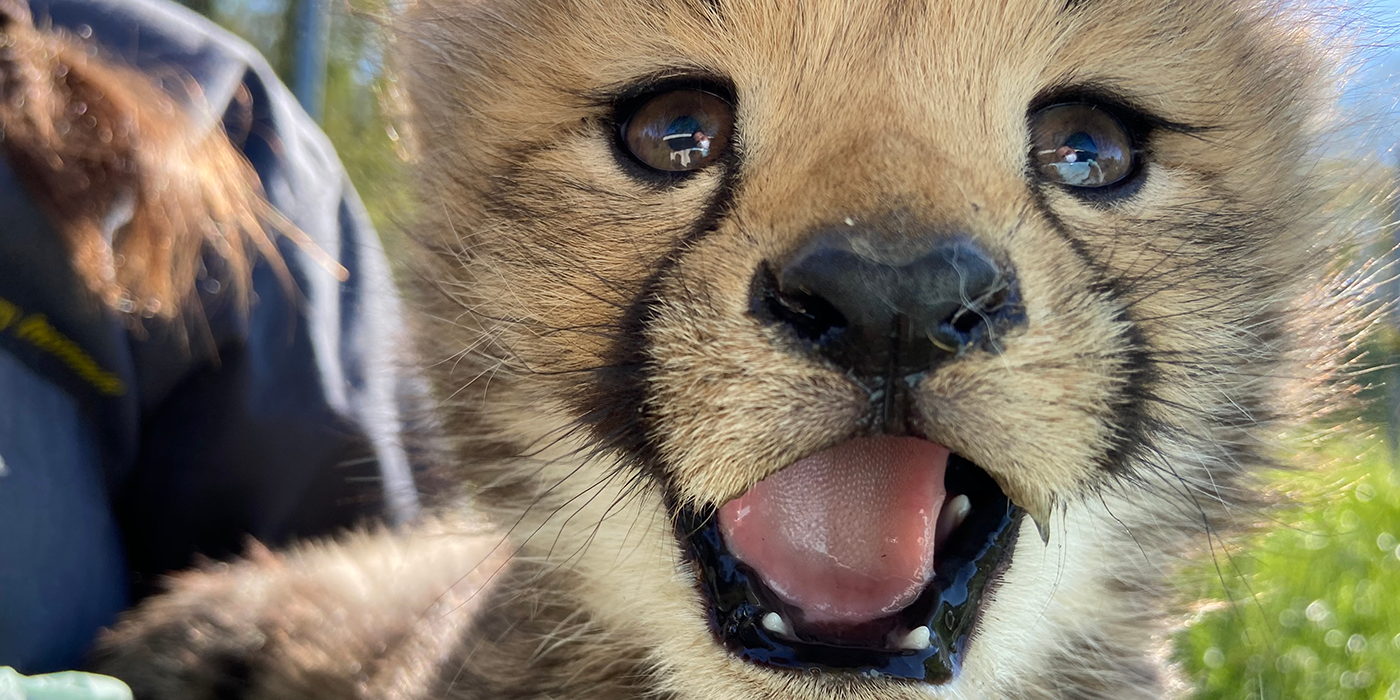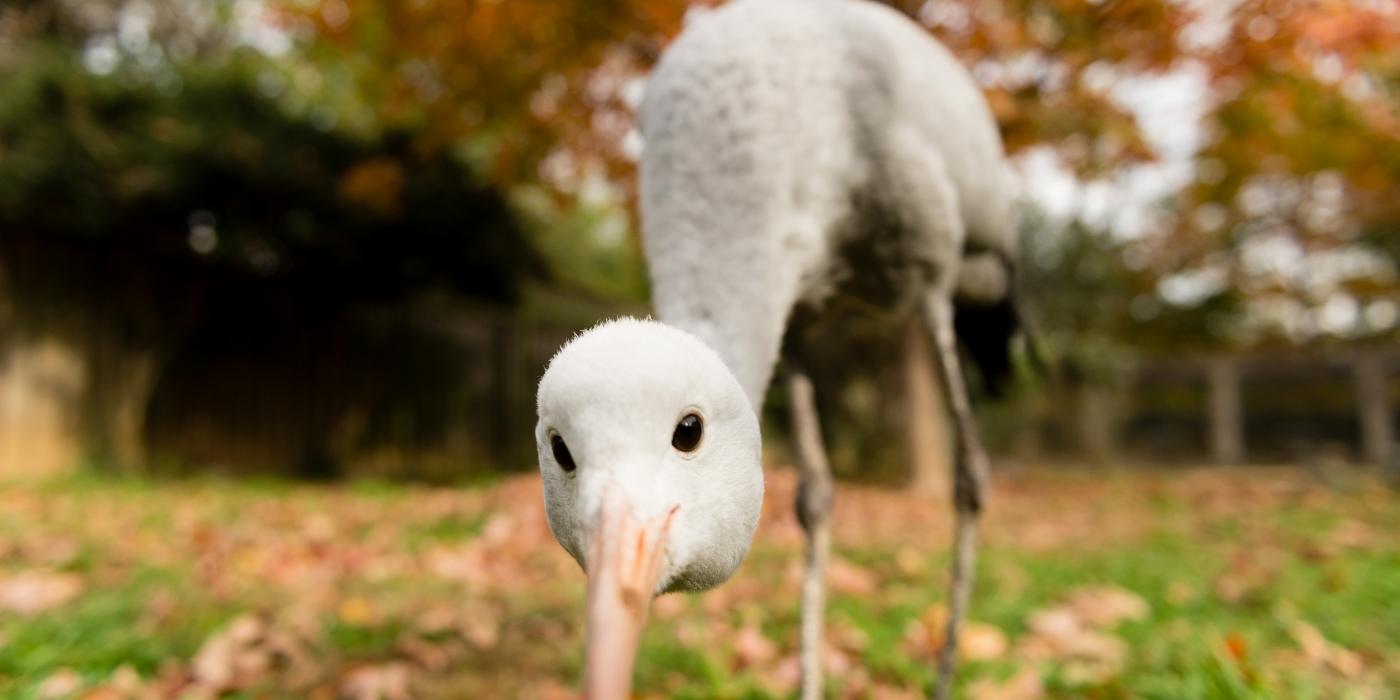Stanley Crane Science Q&A
Two-year-old Stanley crane Alice seems to enjoy participating in daily demonstrations with keepers and Zoo visitors. But how does she really feel about these interactions? To get inside Alice's head, Bird House curator Sara Hallager and keeper Debi Talbott teamed up with Smithsonian Conservation Biology Institute biologist Janine Brown to study her hormones. Learn how they solved the mystery in this science Q&A.
Why did you choose Alice for this study?
Alice's situation is a unique one. Her sibling hatched first, and their parents devoted all of their attention to her sibling. Keepers placed the abandoned egg in an incubator, and Alice hatched July 7, 2014. Her parents would reject her if we put her in their enclosure, so hand-raising Alice was her only chance for survival.
When cranes are raised by humans, they tend to imprint—or socially bond—with the people that care for them. It's apparent that Alice views us as her family. To greet us, she'll "dance"—jump up and flap her wings—and follow us around her yard as we clean and place enrichment items and food for her to find. Before she participates in the demonstration, we let her get this excited energy out of her system. By the time visitors meet Alice, she is calm and usually stands still or searches for food items that we've scattered about.
Behaviorally, Alice gave every impression that she didn't mind (and even enjoyed) participating in these demonstrations. We had two questions that we wanted to answer. The first was: is Alice showing any signs of stress when she participates in a demonstration? The second was: Because she enjoys being around people, does she show signs of stress on days when she is not participating in a demonstration?
To answer those questions, we collaborated with Dr. Janine Brown and the Smithsonian Conservation Biology Institute's endocrine lab to test Alice's cortisol (stress hormone "glucocorticoid") levels.
How do you test for stress hormones?
Hormones exit the body in a variety of ways, including in blood, urine, and feces. Studying poop is a great, non-invasive way of finding out what's taking place inside an animal's body. By using feces, we get a more accurate reflection of her normal, or baseline, hormone levels. If we had used a blood sample, on the other hand, the act of catching her and obtaining that sample could elicit a stress response. So, by using a fecal sample, Alice was calm, her hormones were at baseline, and she was none the wiser that we were taking a peek at her hormones.
From June 1 to July 31, 2015, keepers collected two fecal samples each day: once in the morning, and once in the afternoon. In most animals, cortisol is produced in a diurnal fashion. Levels tend to be higher in the morning as an animal wakes up and begins its normal routine. Then, as the day progresses, cortisol levels decline. Potentially, Alice could show different cortisol values in the morning versus the afternoon.
What were the results?
We determined that both questions had the same answer: Alice was not stressed during demonstrations, and she also wasn't stressed on days when no demonstrations took place. Since she didn't have an overt stress response one way or the other, it appears that her hormones are very stable all around.
What happens next?
We have evidence now that Alice is not stressed by these demonstrations. But, she's still a fairly young bird. Her attitude and cortisol levels could change as she becomes sexually mature. So, for the moment, we will continue her meet-and-greet with Zoo visitors. However, animal welfare comes first. We want to ensure that if she shows any behavioral or hormonal signs that she's no longer comfortable around people that we change our management style.
Will other zoo animals participate in a similar study?
One of the most exciting things about this study is that we're the first to collect hormone data on Stanley cranes as a species. There aren't many studies that show how the impact of participating in a demonstration affects animals. It may be that some animals do really well and thrive in an atmosphere when they're around people. With other animals, that may not be the case.
Starting soon, we'll evaluate the hormones in Alice's parents and siblings quarterly. We will be able to monitor stress hormone levels as animals age; for seasonal and/or weather-related changes; throughout the process of breeding, incubating eggs, and raising chicks; during transport to new facilities; and during quarantine.
Evaluating Alice's family will help us get a baseline on the species as a whole. We'll also be able to see where Alice fits in compared to her family. Ultimately, we want to create a database of hormonal norms for the Stanley cranes and use that information to contribute to improvements in husbandry and reproduction.
This story appears in the March 2016 issue of National Zoo News. Want animal tales delivered straight to your inbox? Sign up for the e-newsletter here.
Related Species:


